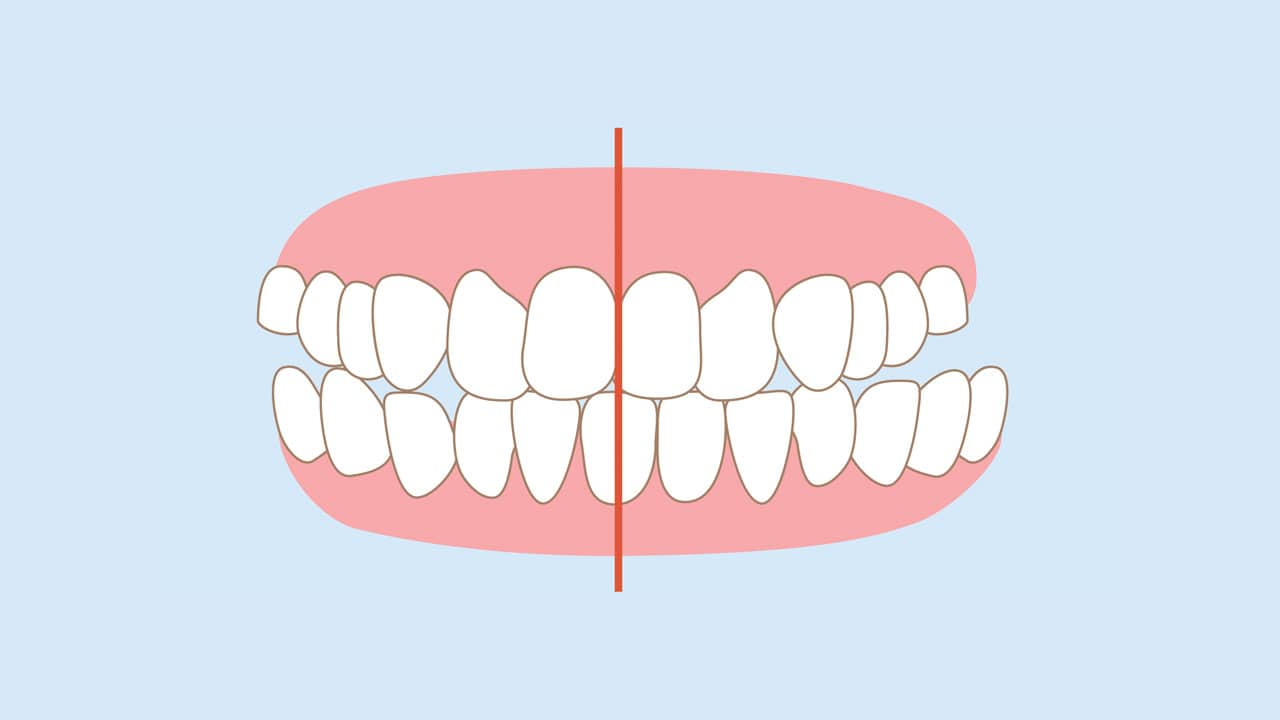
A crossbite is a common orthodontic issue that occurs when the upper and lower teeth don’t align properly, leading to a misaligned bite. This dental problem can affect individuals of all ages and negatively impact oral health and overall well-being.
Types of Crossbite
Crossbites are classified into two main categories: anterior crossbite and posterior crossbite. Understanding the differences between these two types is essential for determining the most effective treatment plan.
Anterior crossbite
An anterior crossbite occurs when the upper front teeth are positioned behind the lower front teeth. This type of misalignment is also commonly referred to as an underbite. An anterior crossbite can lead to difficulties in biting and chewing, speech problems, and an unbalanced facial appearance.
Posterior Crossbite
The posterior crossbite involves the misalignment of the upper and lower back teeth. The upper teeth sit inside the lower teeth when the jaws are closed. This type of crossbite can cause uneven wear on the teeth, jaw discomfort, and even affect jaw development.
Signs and Complications of Crossbite
Recognizing the signs of a crossbite is crucial for early intervention and treatment. Some common indicators of a crossbite include:
- Persistent headaches
- Jaw pain or tension
- Difficulty biting and chewing
- Speech problems
- Uneven tooth wear
- Asymmetrical facial appearance
A crossbite can lead to several oral health issues and complications if left untreated. Excess wear on teeth and an inability to clean them effectively increases your risk of developing tooth decay.
People with a crossbite typically grind their teeth (bruxism). This can lead to worn chewing surfaces, gum recession, and jaw joint disorder (TMJ). A crossbite may also lead to sleep apnea, a dangerous condition that causes nighttime breathing disruptions. A 2020 study found that children with both posterior and anterior crossbites had a higher likelihood of experiencing sleep apnea.
Crossbite Treatment Options
Fortunately, several treatment options are available to correct a crossbite and improve oral health. Some of the most common treatments include:
- Palatal or maxillary expander: A device that is attached to the upper teeth and gradually widens the upper palate, creating more space and improving alignment.
- Invisalign or braces: Clear aligners or traditional braces can help shift teeth into the proper position, correcting both anterior and posterior crossbites.
- Removable expander: A dental appliance worn at night to gently apply pressure and widen the upper palate.
- Reconstructive surgery: In severe cases, surgery may be necessary to widen the upper palate and correct the crossbite.
In addition to professional treatment, simple lifestyle changes can help prevent crossbite development or reduce its impact. Parents can help children avoid thumb-sucking or extended pacifier use and maintain a regular dental checkup schedule to monitor any changes in teeth alignment.
Achieving a Healthy Smile
Correcting a crossbite is essential for maintaining good oral health and preventing future complications. If you suspect you or your child may have a crossbite, it’s important to consult with an experienced dental professional.
At Caputo Dental, our team is dedicated to helping you achieve a healthy, properly aligned smile. Call us today at (630) 922-1311 to schedule a consultation and discuss the best treatment options for your individual needs.